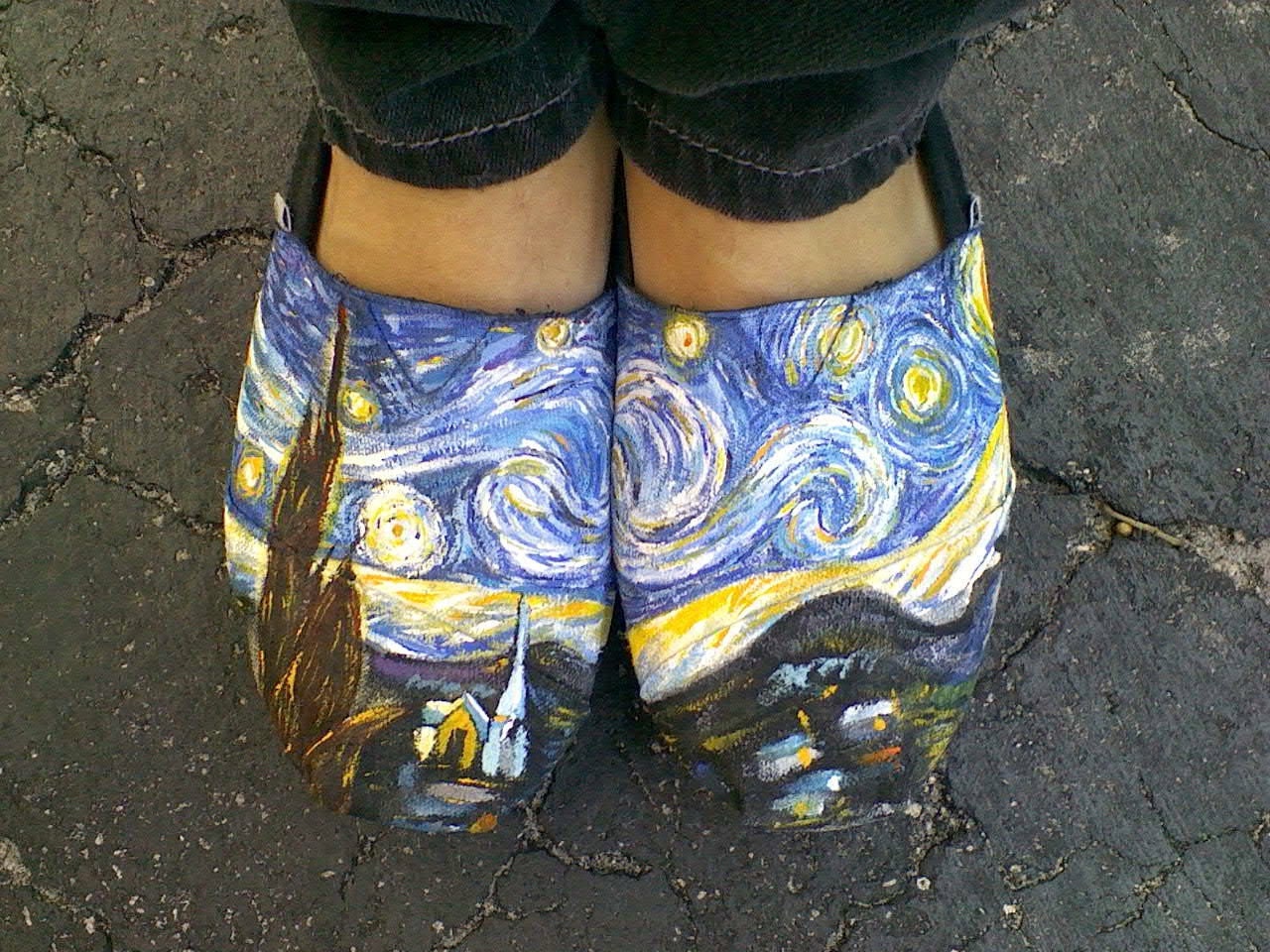This week, I decided to discuss how we use the world wide web to inspire us in our creative outlet.
In my very first blog post, I had said that I would discuss how photo databases and creativity sharing on the internet has affected how we create.
In the above pictures, we see two separate pictures of Toms; the Van Gogh painted Toms were found on one of my daily visited sites, etsy.com, and the second one is a picture of my very own hand-painted Toms that I made a few months ago. Before going on etsy.com, I had not thought of the idea to take my boring old canvas Toms into my own creation. Plagiarism? I think not. Inspiration? Very much so.
While surfing the Internet late one night last year, I came upon some henna art photos. This temporary skin tinting tattoo is a gorgeous piece of art used traditionally at Indian weddings. I fell in love with the intricate and flowy designs found in the markings. I was so intrigued by this art form that it inspired me to paint the picture on the right. Plagiarism? No. Inspiration? Yes.
As an artist, I am so thankful to have the world wide web to have as a reference. Painting the Eiffel Tower has never been easier. Instead of having to travel to Paris to sit in front of the real deal, we can Google the Eiffel Tower and paint off of a photograph. When asked to paint a bulldog, for a Louisiana Tech painting, I was very happy to have a photograph of a bulldog instead of having to find a live dog and make it stay in one spot for hours on end as I paint.
Photo databases such as Google Images, Pinterest, Flickr, and Etsy have been found helpful in the life of viewers in search of inspiration. Just as the ways we receive the news have changed (word of mouth, radio, television, email) so does how we receive forms of inspiration. Should we accept the Internet as a form of receiving inspiration as we do with receiving news online? Thoughts?
 |
| pinterest.com |








